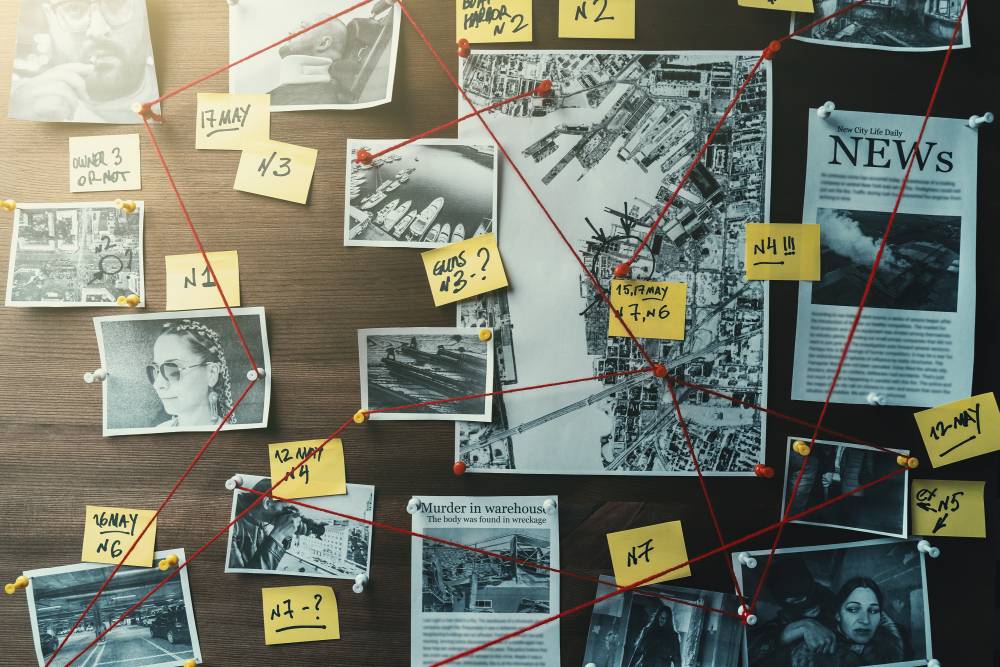What is circumstantial evidence?
Most of us have probably said or heard someone say, “That’s just circumstantial evidence. I need to see more.” We might assume that circumstantial evidence isn’t enough to convict a person of a crime, but we would be wrong.
Although circumstantial evidence is almost always unreliable, open to interpretation, and inconclusive, it is also admissible in court and can be the basis for a criminal conviction.
In this article, we will discuss the basics of circumstantial evidence and how it is interpreted in court, including:
- The definition of circumstantial evidence in SC courts,
- SC’s jury instructions for circumstantial evidence, and
- Examples of circumstantial evidence in a criminal case.
What is Circumstantial Evidence?
There are generally two types of evidence used in criminal trials:
- Direct evidence
- Circumstantial evidence.
Direct Evidence
Direct evidence is evidence that “immediately establishes the main fact to be proved.” For example, if an eyewitness says, “I saw him kill that man,” that is direct evidence of murder (although the prosecution still needs to prove malicious intent). Another example is a videotape from a department store surveillance camera that shows the defendant placing merchandise in their pocket before leaving the store.
It is direct evidence because there is no need to “connect the dots” or make assumptions about what happened. Direct evidence immediately establishes the main fact to be proved – in our examples, that the defendant killed the alleged victim or that the defendant left the store without paying for their merchandise.
Circumstantial Evidence
Circumstantial evidence is proof of “collateral facts” from which a primary fact can be inferred. It is based on inference, and it is not based on direct personal knowledge or observation.
Using our same example from above, it would be circumstantial evidence if the eyewitness testifies that they saw the defendant walking away from the crime scene a block away, but they did not see the defendant pull the trigger.
The jury could take the fact that a witness saw the defendant walking a block away as evidence that they were in the vicinity of the crime, but not that they committed the crime.
Combined with other circumstantial evidence, however, like gunshot residue on the defendant’s hands or clothing, a pistol in the defendant’s pocket that is the same caliber used to kill the alleged victim, the defendant’s use of the alleged victim’s credit card an hour after the shooting, and inconsistent statements made when police questioned the defendant, the jury might be able to infer from the various pieces of circumstantial evidence that the defendant is guilty of the crime.
Why Jury Instructions Matter – Circumstantial Evidence and the “Logan Charge”
At the end of the trial, before the jurors are asked to deliberate and reach their verdict, the judge will read “jury instructions” to the jurors, explaining the law as it is to be applied to the facts of the case.
One of those jury instructions, if any circumstantial evidence was presented during trial, should be the “Logan charge” on circumstantial evidence.
State v. Grippon
Before 2013 when Logan was decided, the courts used the “Grippon charge” for circumstantial evidence.
The jury instruction taken from State v. Grippon defined direct and circumstantial evidence and then stated, “The law makes absolutely no distinction between the weight or value to be given either direct or circumstantial evidence, nor is a greater degree of certainty required of circumstantial evidence than direct evidence.”
State v. Logan
State v. Logan, however, requires the trial court (upon the defendant’s request) to also explain to jurors that, “to the extent the State relies on circumstantial evidence, all of the circumstances must be consistent with each other, and when taken together, point conclusively to the guilt of the accused beyond a reasonable doubt. If these circumstances merely portray the defendant’s behavior as suspicious, the proof has failed.”
If the state uses circumstantial evidence, that evidence must 1) be consistent and 2) point conclusively to guilt beyond a reasonable doubt or the jury must acquit the defendant.
Many judges in SC still use the Grippon charge, and that is not automatically reversible error. When the defendant asks for the Logan charge, however, the trial court is required to read it to the jurors, and, if the court does not, it is reversible error.
SC’s appellate courts have overturned several convictions since Logan was decided, including State v. Herndon and State v. Dent, where the defendant requested a Logan charge and the trial court refused.
Always Request the Logan Jury Instruction
What’s the takeaway for trial lawyers?
In every criminal trial, there are potential motions or objections that the defense should always make that will result in reversal on appeal if the trial court denies the motion or objection.
Request a Logan jury instruction in every case where there is circumstantial evidence.
The trial courts should be using this jury instruction anyway, it can make a difference in the outcome of a close case, and, in the worst-case scenario of a conviction and prison sentence, you will have at least one ground for appeal…
Questions About Circumstantial Evidence in SC?
If you have been arrested for a crime in South Carolina, get help from an experienced criminal defense lawyer in SC immediately – before you talk to police or prosecutors.
Call 843-761-3840 or use this form to contact us today to discuss your case and start working towards the best possible outcome for you.
Ready To Speak With An Attorney?
Let’s discuss the details of your case and see if we can help.

